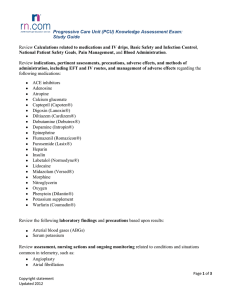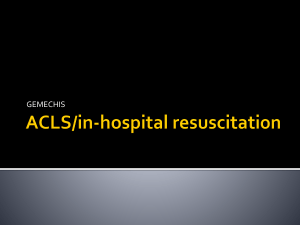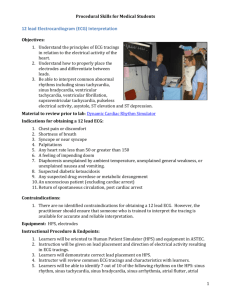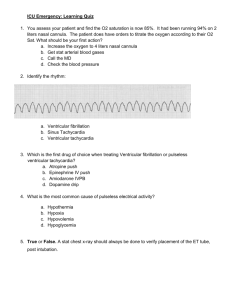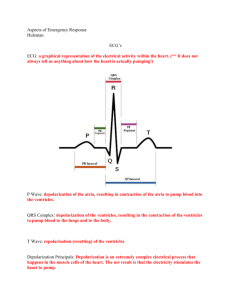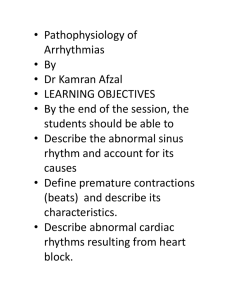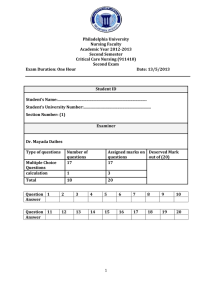File
advertisement
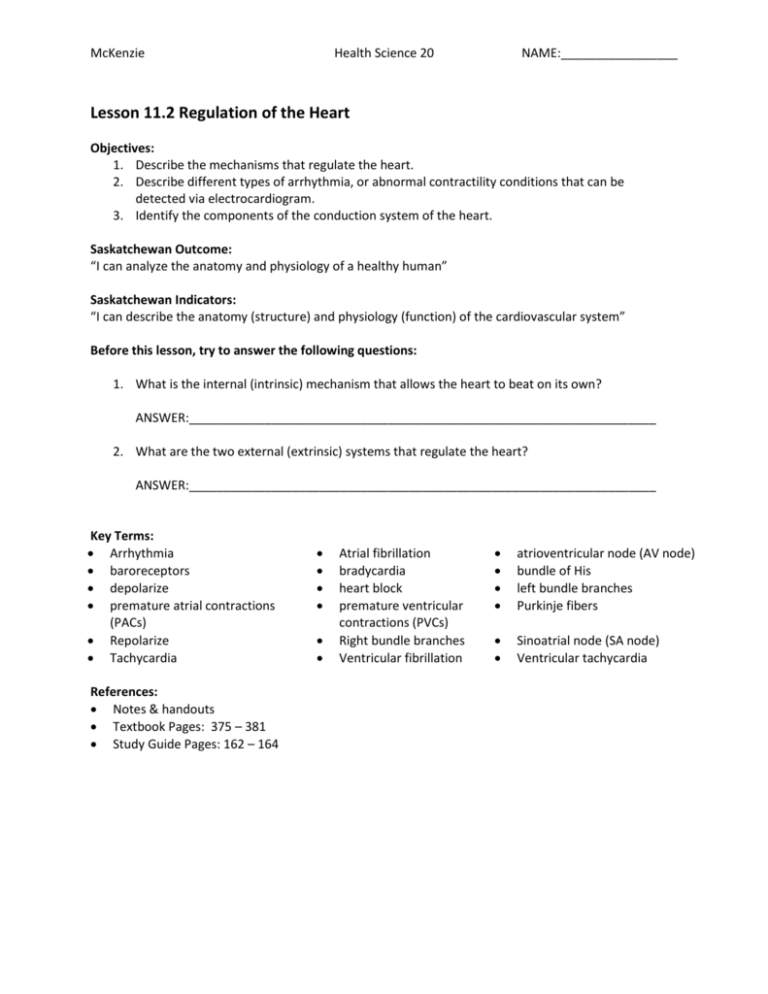
McKenzie Health Science 20 NAME:_________________ Lesson 11.2 Regulation of the Heart Objectives: 1. Describe the mechanisms that regulate the heart. 2. Describe different types of arrhythmia, or abnormal contractility conditions that can be detected via electrocardiogram. 3. Identify the components of the conduction system of the heart. Saskatchewan Outcome: “I can analyze the anatomy and physiology of a healthy human” Saskatchewan Indicators: “I can describe the anatomy (structure) and physiology (function) of the cardiovascular system” Before this lesson, try to answer the following questions: 1. What is the internal (intrinsic) mechanism that allows the heart to beat on its own? ANSWER:____________________________________________________________________ 2. What are the two external (extrinsic) systems that regulate the heart? ANSWER:____________________________________________________________________ Key Terms: Arrhythmia baroreceptors depolarize premature atrial contractions (PACs) Repolarize Tachycardia References: Notes & handouts Textbook Pages: 375 – 381 Study Guide Pages: 162 – 164 Atrial fibrillation bradycardia heart block premature ventricular contractions (PVCs) Right bundle branches Ventricular fibrillation atrioventricular node (AV node) bundle of His left bundle branches Purkinje fibers Sinoatrial node (SA node) Ventricular tachycardia McKenzie 11.2 Regulation of the Heart Internal Control (Intrinsic) External Control (Extrinsic) Health Science 20 NAME:_________________ McKenzie The Conduction System The Electrocardiogram Health Science 20 NAME:_________________ McKenzie Normal Sinus Rhythm Sinus Bradycardia Sinus Tachycardia Premature Atrial Contractions (PACs) Atrial Fibrillation Health Science 20 NAME:_________________ McKenzie Health Science 20 NAME:_________________ Premature Ventricular Contractions (PVCs) Ventricular tachycardia (VT) Ventricular fibrillation (VF) Heart Block Complete the Lesson 1. WATCH: The Heart, Part 2- Heart Throbs: Crash Course A&P #26 (https://www.youtube.com/watch?v=X9ZZ6tcxArI) 2. Read p. 375 - 381 in your textbook 3. Complete the “Check Your Understanding” Questions, p. 376, 377, 380 4. Correct your “Before this lesson” answers 5. Complete #1-5, p. 381 6. Study Guide pages 162 and 164 (handout)

